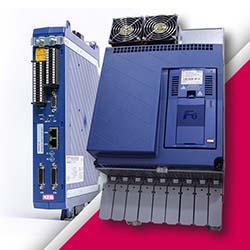It is vital for manufacturers not to give away what they are best at, to some third-party contract manufacturing firm and compromise the quality and the experience promise that clients expect. The cost equation thats bothering these manufacturers, however, can be solved by shedding the non-core design tasks while retaining back the control in manufacturing.
Kiosk Manufacturers Should Partner for CAD Design Support and Not for Manufacturing
Kashyap Vyas | Hi-Tech CADD Services
.jpg)
American kiosk manufacturers are forced to outsource part of their manufacturing phases to remain competitive. But this strategy leads to losing control over product quality eventually.
Kiosks are deployed in a multitude of environments today. Industries that have deployed kiosks have experienced better sales due to efficiency in the service provided, and it has led to reduced customer waiting time and improved the buying experience. The market need is as such driving competition amongst the American manufacturers, leaving them with the challenge of operating lean and offering custom kiosk solutions that are cost-effective.
Most manufacturers today outsource the manufacturing tasks in a hope to keep the costs minimum and deliver a competitively priced solution to the customers. But, for a product that demands creative design thinking and specialized manufacturing expertise, the outsourcing equation can negatively impact the overall brand value.
Giving away the tasks that a manufacturer is best at, and the ones that actually promise the value for money to customers, will eventually lead to compromising the kiosk quality. The costs however can be managed well, if the manufacturer chooses to outsource the engineering tasks, such as 2D fabrication drawings and 3D CAD model development for the custom kiosk designs.
Concept to completion process for kiosks
The kiosk manufacturing process begins with conceptualization. This is where the breadth and length of industry and kiosk design experience matters the most. Conceptual sketches and drawings are prepared along with renderings to determine the kind of material, shape and light required for the desired aesthetics and functionality. The entire success of the organization depends on how well the kiosk designs are conceptualized considering the customer requirements and is turned to tangible reality.
Once the concept is finalized, the next step involves converting the conceptual sketches to fabrication drawings and 3D CAD models with accurate dimensions and features and BOM (Bill of Materials) list. This is usually performed by designers and engineers in CAD platforms such as SolidWorks.
The fully functional design is then sent for fabrication where numbers of operations like cutting, welding, grinding, polishing and painting are performed, based on the design information. Each component of the kiosk is then assembled together and is inspected for any errors. Interactive kiosks are further tested for the software functionality and is then finally cleaned and packaged for shipping. The process doesn’t end here. A true kiosk manufacturer also provides support for staging and deployment.
How design support fits in
If we look at the process of kiosk manufacturing, the stages of concept development, manufacturing and deployment remain critical to ensure quality at the end. However, the design engineering part where the conceptual ideas are simply transformed to manufacturing ready drawings and 3D models is where a manufacturer can partner to reduce the overheads and drive down the development cost and time. Partnering with engineering service providers can quickly turn the conceptual sketches to production ready design information that can be swiftly utilized at the shop floor.
Most design support service providers have multiple CAD technologies and resource capabilities that can work in favor of manufacturer without investing much. Additionally, the time saved in the development cycle enables faster time-to-market, eventually allowing the kiosk manufacturer to compete better. Most importantly, this type of setup allows retaining the manufacturing processes and gain control over maintaining the quality and customer trust.
Kiosk is all about providing great customer experiences
Kiosks irrespective of their industry application are meant to provide great interactive experience to customers. Giving an improved experience however is entirely dependent on the design and manufacturing skills of the manufacturer. It is vital then for manufacturers not to give away what they are best at, to some third-party contract manufacturing firm and compromise the quality and the experience promise that clients expect. The cost equation that’s bothering these manufacturers, however, can be solved by shedding the non-core design tasks while retaining back the control in manufacturing. This type of outsourcing partnership for design support essentially helps the manufacturer to meet the quality promise and regain customer trust and brand loyalty.

About Kashyap Vyas
Kashyap Vyas is an Engineer at Hi-Tech CADD Services and holds a Master’s degree in Thermal Engineering with several research papers to his credit. He covers CAD and CAE topics for the engineering industry. His contributions are primarily focused on encouraging manufacturers and suppliers to adopt virtual product development tools to build efficient products with reduced time-to-market.
The content & opinions in this article are the author’s and do not necessarily represent the views of ManufacturingTomorrow
Comments (0)
This post does not have any comments. Be the first to leave a comment below.
Featured Product

